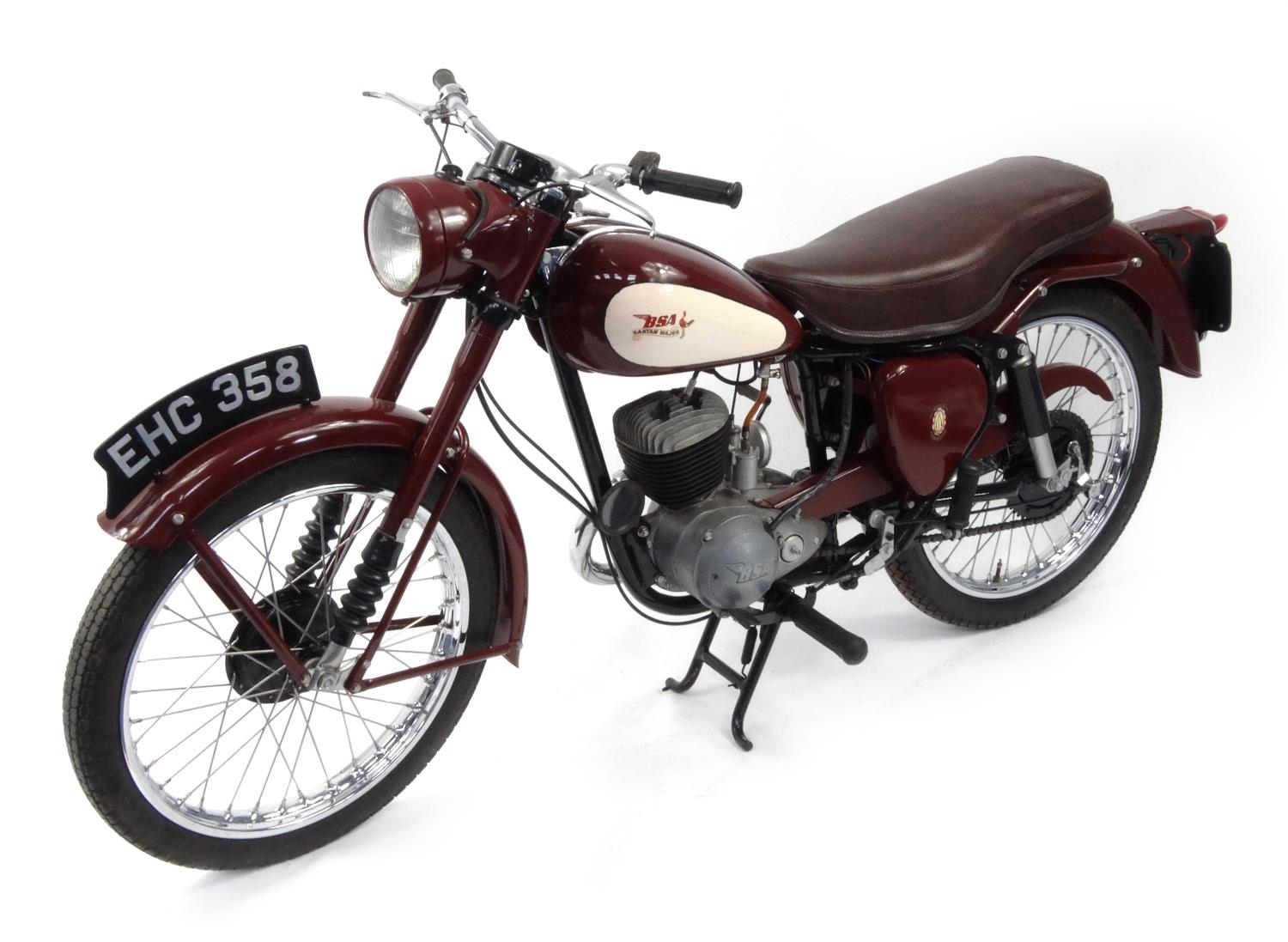CALL IT a sheltered upbringing…I have been on a motorbike only once. This was on the back of my brother’s 1950-ish BSA Bantam when I was at primary school, or just into secondary. Goodness knows what I was thinking.
My brother John was rather better at dismantling motorcycles than assembling them, and bits of the Bantam were to be found around the house long after he parted with it.
Since those days, I wince when a Bantam surfaces at auction – as one did in Eastbourne at the end of last month. This was a good one, though, with just one recorded owner in 60 years.
Indeed, it came with its original receipt of sale, instruction manual, V5 document, log book, related paperwork and parts receipts.
It was a red 1957 Bantam Major D3 150cc bike with just 21,801 recorded miles, and with the registration mark EHC 358.
I wasn’t even aware of red examples. I thought they were all peely-wally green – apart from those GPO-stamped examples used by the posties, which had mud guards, I think. I do recall those distinctive two-tone petrol tanks, though.
Over 400,000 Bantams were built between 1948 and 1971 and they are equally no strangers to salerooms as they are to junkyards and scrap dealers.
Roadworthy examples can be found for a few hundred pounds, but single owner models must be rarer and duly considered desirable nowadays.
There were several variants of Bantam, from the humble 125cc which lived in our garden washhouse, to the powerful – at that time – 175cc.
They became the archetypal British lightweight motorbike and, as with the lovable Morris Minor for car drivers, the BSA Bantam was responsible for putting many people on two wheels for the first time.
Intimidated by such things since my two-street experience almost half a century ago, I have drawn the next paragraph from the internet:
“The original Bantam, the D1, was released in October 1948 and continued in production for several years. It had telescopic forks, a rigid rear end, direct electrics, shovel front-mudguard and fishtail silencer, was available only in ‘mist green’ and sold for £60 plus tax.”
It was me, I suspect, who had the rigid rear suspension!
The hammer price at Eastbourne Auctions was £1600.










